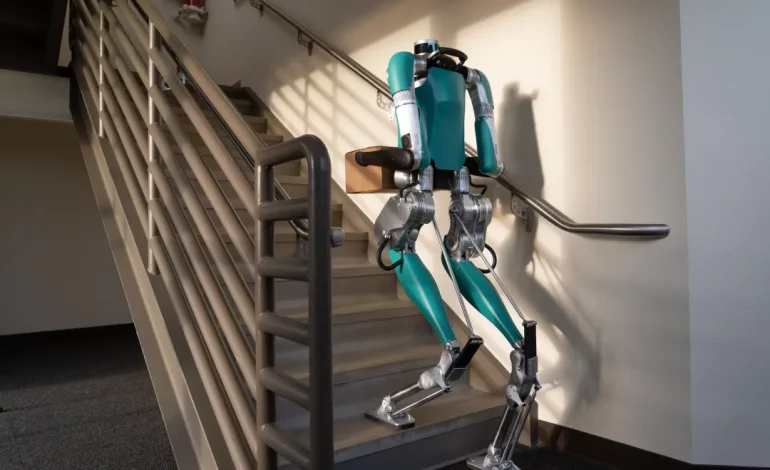Amazon is reportedly developing artificial intelligence software to power humanoid robots that could assist in package delivery operations, signaling a new phase in the company’s automation strategy.
According to a report by The Information, the technology giant has begun constructing a testing site dubbed a “humanoid park” at one of its San Francisco offices. Roughly the size of a coffee shop, the site includes a Rivian electric delivery van and an obstacle course designed to simulate real-world delivery conditions.
These humanoid robots — developed using hardware from external robotics companies — may one day “spring out” of Amazon’s vans to deliver packages directly to doorsteps. While the vehicles would still be driven by human operators in the short term, the company aims to boost efficiency by allowing robots to make separate deliveries in parallel.
Amazon has yet to officially confirm the details of this project, but the initiative fits within its broader effort to automate logistics. The company currently deploys various autonomous robots in its warehouses and has previously partnered with Agility Robotics to trial its humanoid robot “Digit” for tasks like warehouse support. Peggy Johnson, Agility’s CEO, has said these robots can shift human roles toward supervisory positions, essentially making workers “robot managers.”
The testing facility in San Francisco will reportedly trial a range of robots, including a $16,000 model from Chinese robotics firm Unitree. After internal tests, Amazon intends to move the robots into real-world environments to evaluate their delivery capabilities.
The effort is part of a wider AI-driven transformation within the company. In recent announcements, Amazon highlighted several new initiatives, including a generative AI project called “Wellspring” designed to improve last-mile delivery accuracy and driver experience. The company is also working on enhanced mapping tools and AI models to predict customer demand and optimize inventory distribution.
While the hardware for humanoid robots is rapidly advancing, experts caution that real-world application still presents significant challenges. Professor Subramanian Ramamoorthy, chair of robot learning and autonomy at the University of Edinburgh, said the robots might perform reliably in standardized, controlled environments, but unpredictable elements — such as uneven surfaces, pets, or children — could complicate operations.
Amazon’s growing investment in robotics also builds on its acquisition of Zoox, a self-driving vehicle startup, as the company continues exploring ways to automate the full delivery process, from warehouses to the customer’s front door.
Despite the technological promise, the possibility that robots may eventually replace some human delivery roles has sparked wider discussions about the future of work in the logistics sector. Amazon employs hundreds of thousands of delivery personnel globally, and while the company has not confirmed whether humanoid robots would ultimately take over these roles, industry analysts note that such technologies are being positioned to supplement, and possibly reduce, human labor in the long term.
With input from the Guardian, the Verge, and PYMNTS.








The latest news in your social feeds
Subscribe to our social media platforms to stay tuned